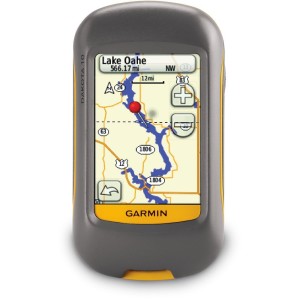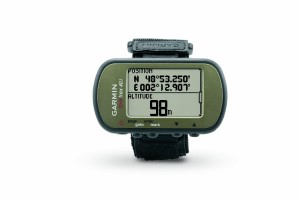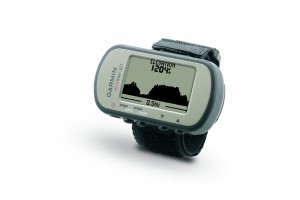An End-to-end Hiking GPS Buying Guide
 Start your battle against topographical disorientation with this hiking GPS buying guide. Finding yourself in the middle of nowhere is the last thing that you would want to happen when hiking, right? But sometimes people simply cannot help but become disoriented. Thanks to technology, hiking GPS are now here to aid you with any difficult trail, or the lack thereof. And to help you maximize the benefits of this technology, this guide will cover everything that there is to know about hiking GPS.
Start your battle against topographical disorientation with this hiking GPS buying guide. Finding yourself in the middle of nowhere is the last thing that you would want to happen when hiking, right? But sometimes people simply cannot help but become disoriented. Thanks to technology, hiking GPS are now here to aid you with any difficult trail, or the lack thereof. And to help you maximize the benefits of this technology, this guide will cover everything that there is to know about hiking GPS.
What is a Hiking GPS?
GPS means Global Positioning System. Simply put, a hiking GPS is a handheld GPS receiver which any hiker can use. Depending on its specifications, a hiking GPS can tell you where you are, record your track, locate and save your destinations, and tell you exact directions on how to get there. There are many other features of a hiking GPS which will all be discussed here.
How does it Work?
Other hiking GPS buying guide will simply tell you which brands of handheld GPS to buy. They would not even bother to tell you how the product you are going to buy works. But you surely need to know the concept behind hiking GPS for how can you decide when you do not know what you are deciding about? So, here is how it works:
Around the world, in the outer space, there are a number of satellites that sends signals to the Earth’s ground. These signals determine the longitudinal and latitudinal location of every point it covers. When your hiking GPS receives this signals, it is able to process the data and tell you your location vis-à-vis the location of other things around you.
Some will argue that the functions of a hiking GPS can easily be enjoyed using any smartphone with a GPS app. But remember, you are on a highly-active trip in a tricky and sometimes dangerous location. More importantly, your hike will take a day, at the very least. Anyone with a smartphone knows that its battery life is not dependable. Other hiking GPS buying guide will tell you that, of course, you can buy an extra battery for your smartphone. But that would cost a lot. While, a hiking GPS can last up to 15 hours per charge and most only uses AA batteries.
Aside from that, the durability of a hiking GPS is unquestionable. Most of them are shock- and waterproof. And because they are designed exactly for navigation, they have a wide range of coverage. So whether you are at the foot of a mountain, inside a cape, or at the peak, you can still navigate well with your hiking GPS.
Hiking GPS Features to Look For
Now we have come to the best part of this hiking GPS buying guide. What are the specific things that you should consider when buying a hiking GPS?
- Battery life – You would want all of your hiking gears to last long, right? So one of the most important things that you should check on when choosing a hiking GPS is its battery life. Those hiking GPS that run on Lithium batteries are the ones that last longer. However, they are a bit more expensive than those that run on nickel metal hydride (NiMH). But remember, you are after quality mostly. What is the point of having a pair of long-lasting hiking boots, like Vasque Men’s Sundowner GTX for example, if your GPS is already dead and it will not take you to where your feet want to be?
- Memory – The concept is simple. You should choose a hiking GPS with a high memory capacity so that it can store more map data and routes.
- Electronic compass – Why would a hiking GPS need an electronic compass? Does it not do what a compass does? Sorry to disappoint you, but not entirely. A GPS can only guide you when you are moving. An electronic compass will point you where to go even when you are not moving. That is why it is important that you get a hiking GPS with an integrated electronic compass.
- Barometer – Aside from location and direction, it will be better if your hiking GPS can also tell you about the weather. A barometer will help you predict the weather by measuring the air pressure at whatever height you are currently in.
- Interface – Should you go with a GPS receiver that has a touch-screen or physical buttons? A touch-screen hiking GPS may be more intuitive, especially to younger hikers who are used to such interface. However, it is easier to use hiking GPS that has physical buttons because it can be used even with your gloves on.
- Additional Feature – Newer versions of hiking GPS has added features. Perhaps one of the most attractive among these is a digital camera. If you already have a camera on your GPS receiver, you can do away with your bulky one. With this, you can free some space from your TETON Sports Explorer4000.
 Must-have Hiking GPS Accessory
Must-have Hiking GPS Accessory
What other hiking GPS buying guide will not tell you is this: a hiking GPS accessory can help you decide on which GPS receiver to get. When you go on a hike and you are anticipating a very low temperature, you would pack clothing items for layering, right? As much as possible, you would wear a base layer, a good insulation layer like Arcteryx Atom LT Jacket, plus a shell layer to top it all. You can also provide the same weather protection to your hiking GPS. There are many weather-resistant cases available in the market nowadays. However, these cases are not compatible with all hiking GPS. Therefore, even before purchasing your GPS, you should already check whether it is compatible with any weather-resistant case.
And that’s pretty much it. Now you are ready to make that purchase. Hopefully, you have learn enough from this hiking GPS buying guide to help you choose the best GPS receiver that fits your needs and resources.
Filed under: Navigation Gear
Like this post? Subscribe to my RSS feed and get loads more!
